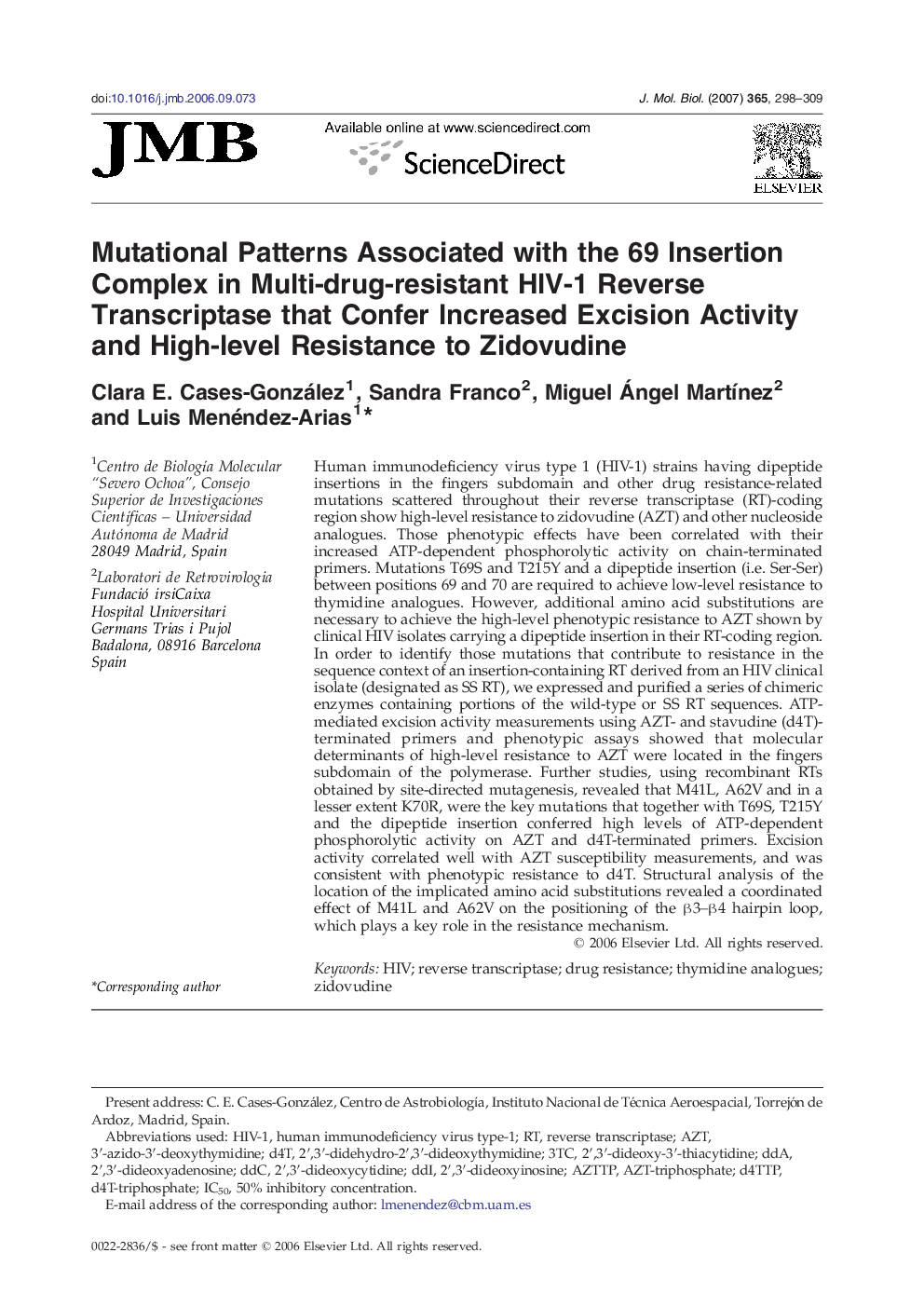| کد مقاله | کد نشریه | سال انتشار | مقاله انگلیسی | نسخه تمام متن |
|---|---|---|---|---|
| 2188554 | 1096176 | 2007 | 12 صفحه PDF | دانلود رایگان |

Human immunodeficiency virus type 1 (HIV-1) strains having dipeptide insertions in the fingers subdomain and other drug resistance-related mutations scattered throughout their reverse transcriptase (RT)-coding region show high-level resistance to zidovudine (AZT) and other nucleoside analogues. Those phenotypic effects have been correlated with their increased ATP-dependent phosphorolytic activity on chain-terminated primers. Mutations T69S and T215Y and a dipeptide insertion (i.e. Ser-Ser) between positions 69 and 70 are required to achieve low-level resistance to thymidine analogues. However, additional amino acid substitutions are necessary to achieve the high-level phenotypic resistance to AZT shown by clinical HIV isolates carrying a dipeptide insertion in their RT-coding region. In order to identify those mutations that contribute to resistance in the sequence context of an insertion-containing RT derived from an HIV clinical isolate (designated as SS RT), we expressed and purified a series of chimeric enzymes containing portions of the wild-type or SS RT sequences. ATP-mediated excision activity measurements using AZT- and stavudine (d4T)-terminated primers and phenotypic assays showed that molecular determinants of high-level resistance to AZT were located in the fingers subdomain of the polymerase. Further studies, using recombinant RTs obtained by site-directed mutagenesis, revealed that M41L, A62V and in a lesser extent K70R, were the key mutations that together with T69S, T215Y and the dipeptide insertion conferred high levels of ATP-dependent phosphorolytic activity on AZT and d4T-terminated primers. Excision activity correlated well with AZT susceptibility measurements, and was consistent with phenotypic resistance to d4T. Structural analysis of the location of the implicated amino acid substitutions revealed a coordinated effect of M41L and A62V on the positioning of the β3–β4 hairpin loop, which plays a key role in the resistance mechanism.
Journal: Journal of Molecular Biology - Volume 365, Issue 2, 12 January 2007, Pages 298–309